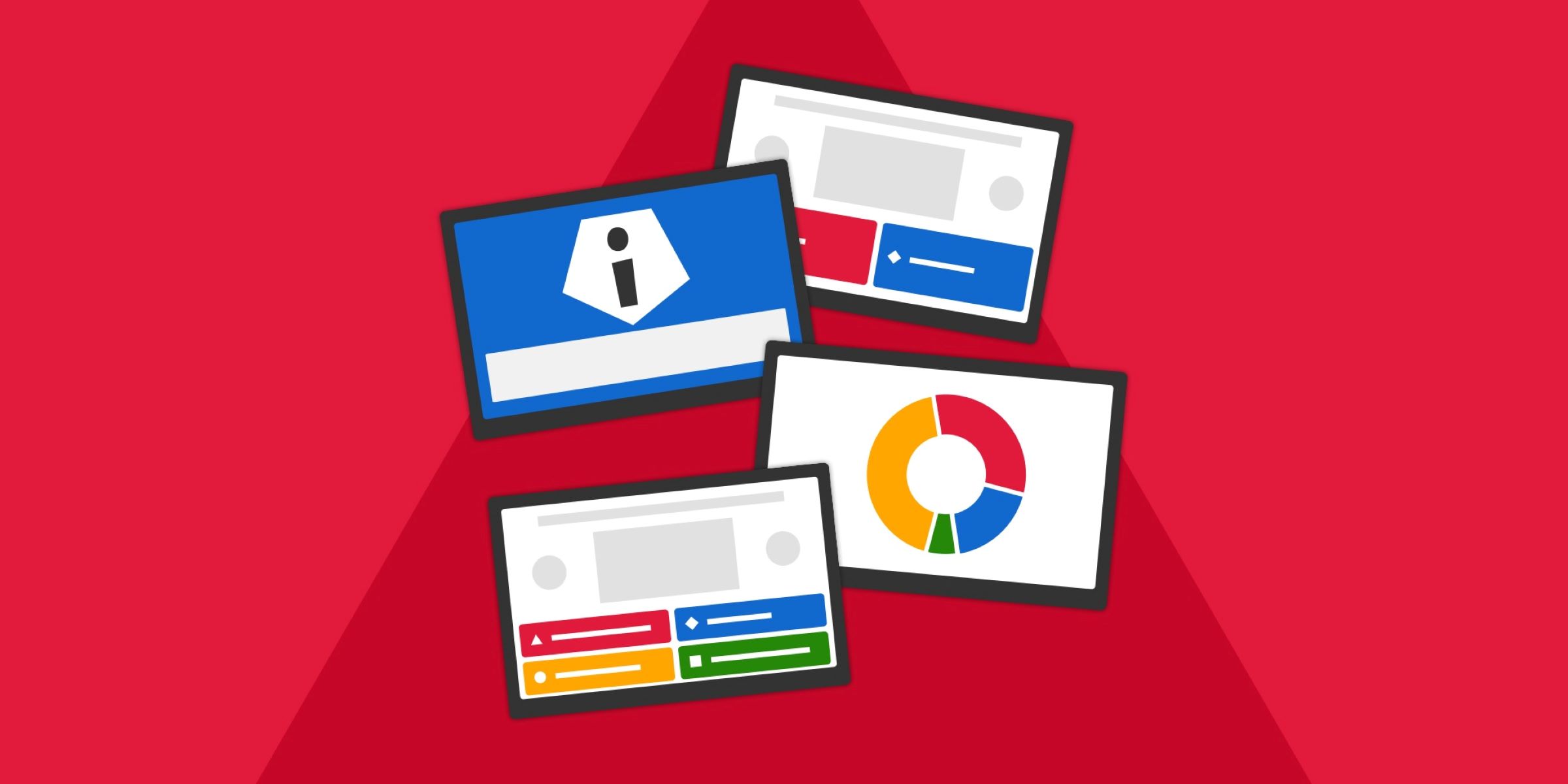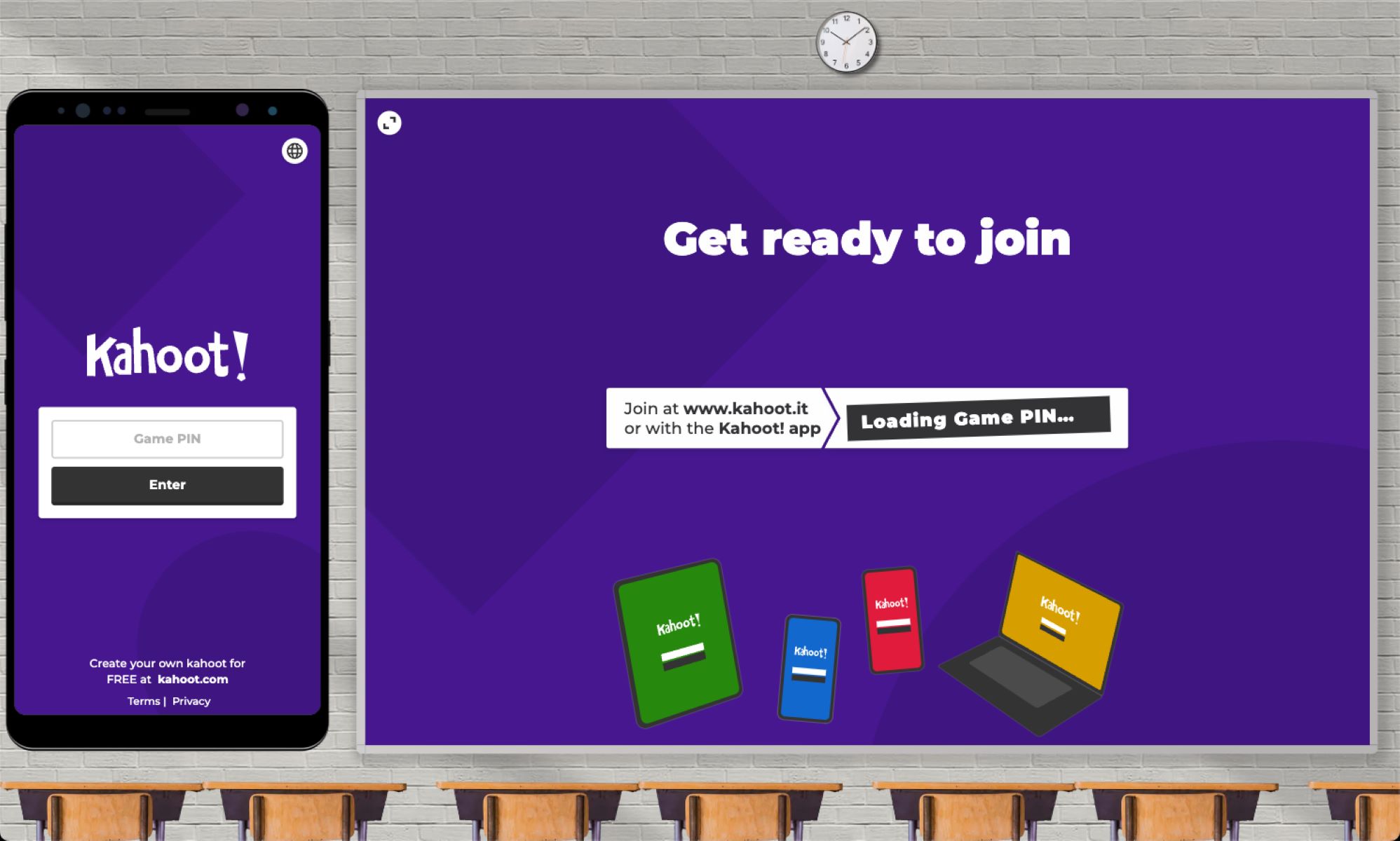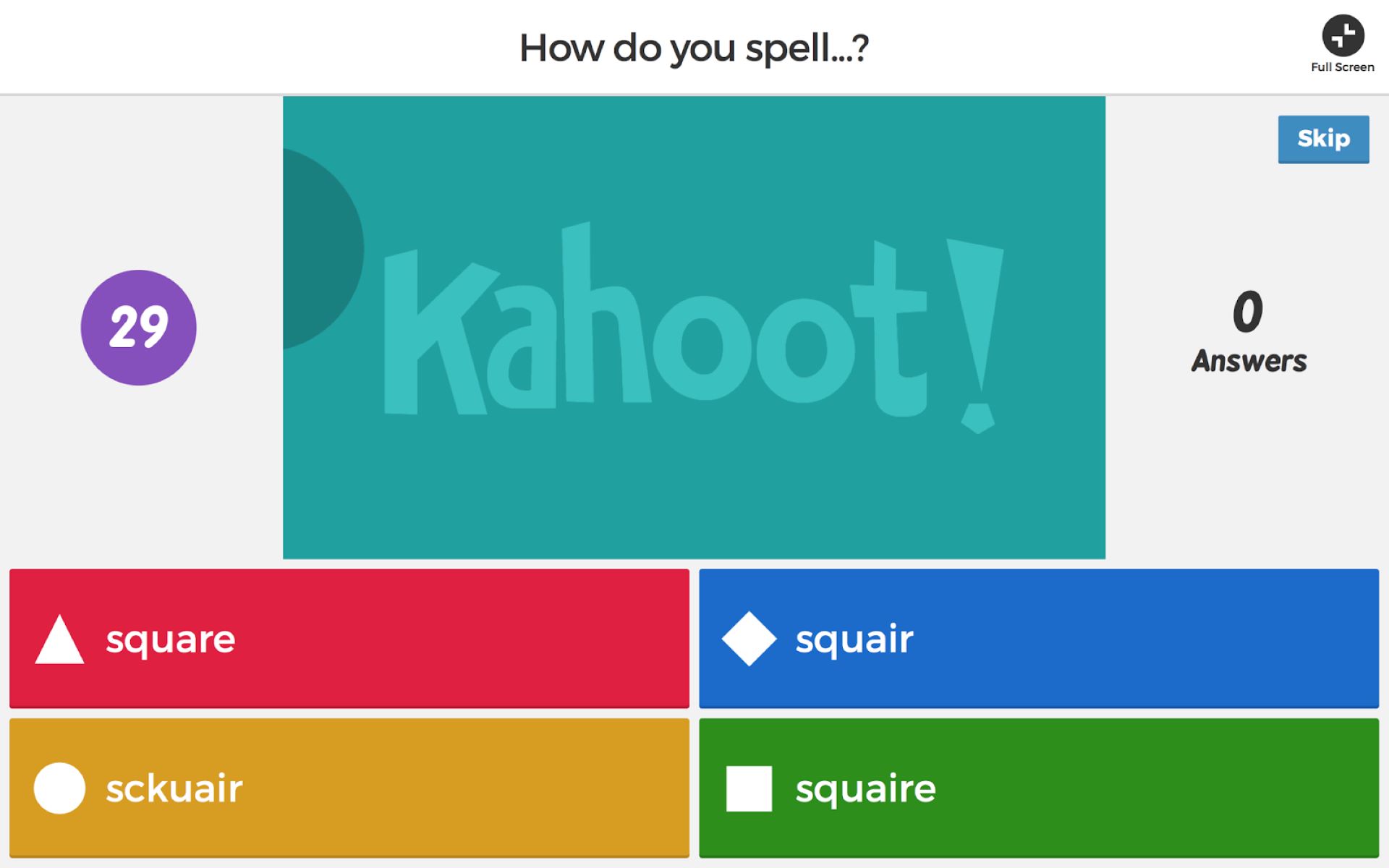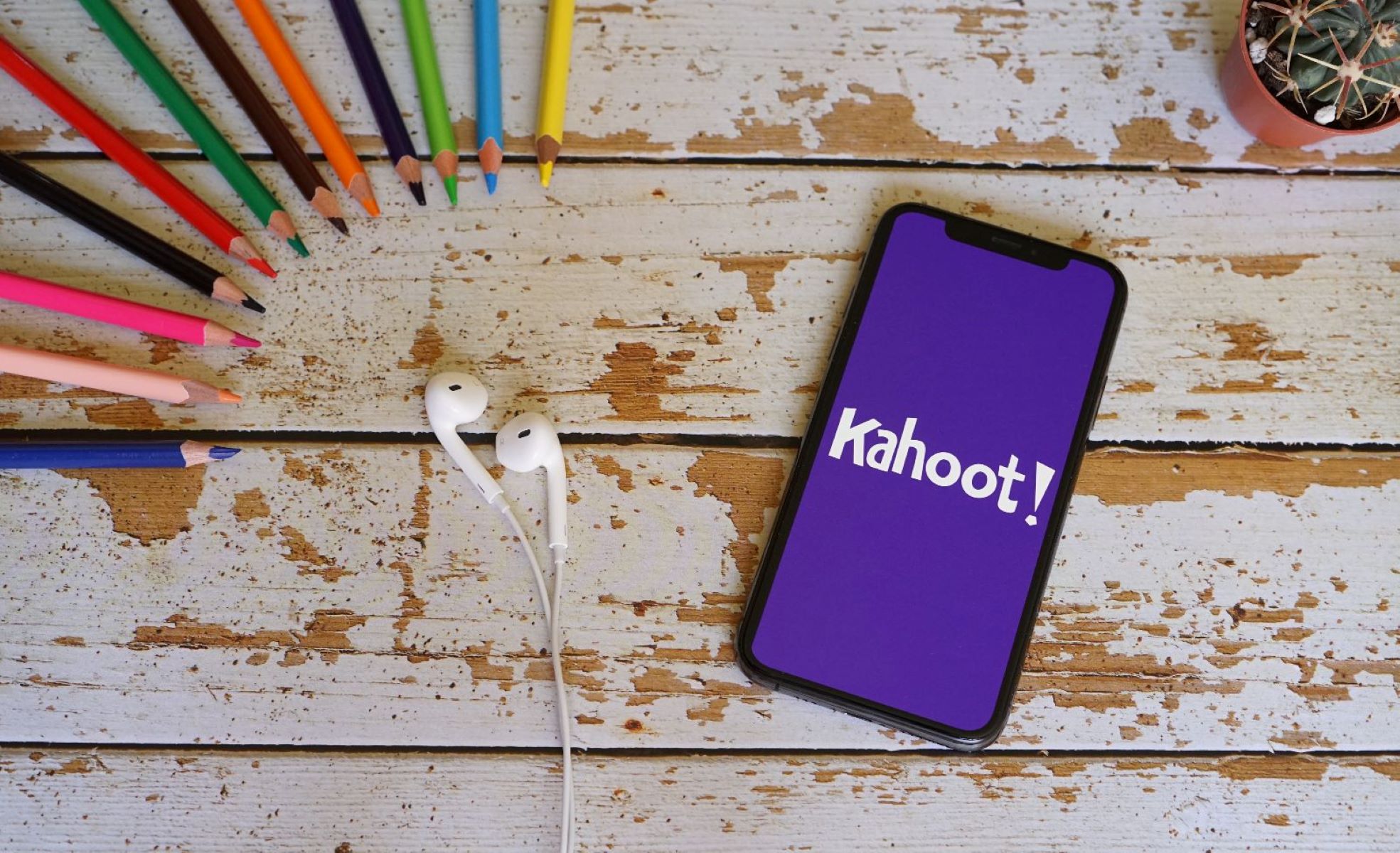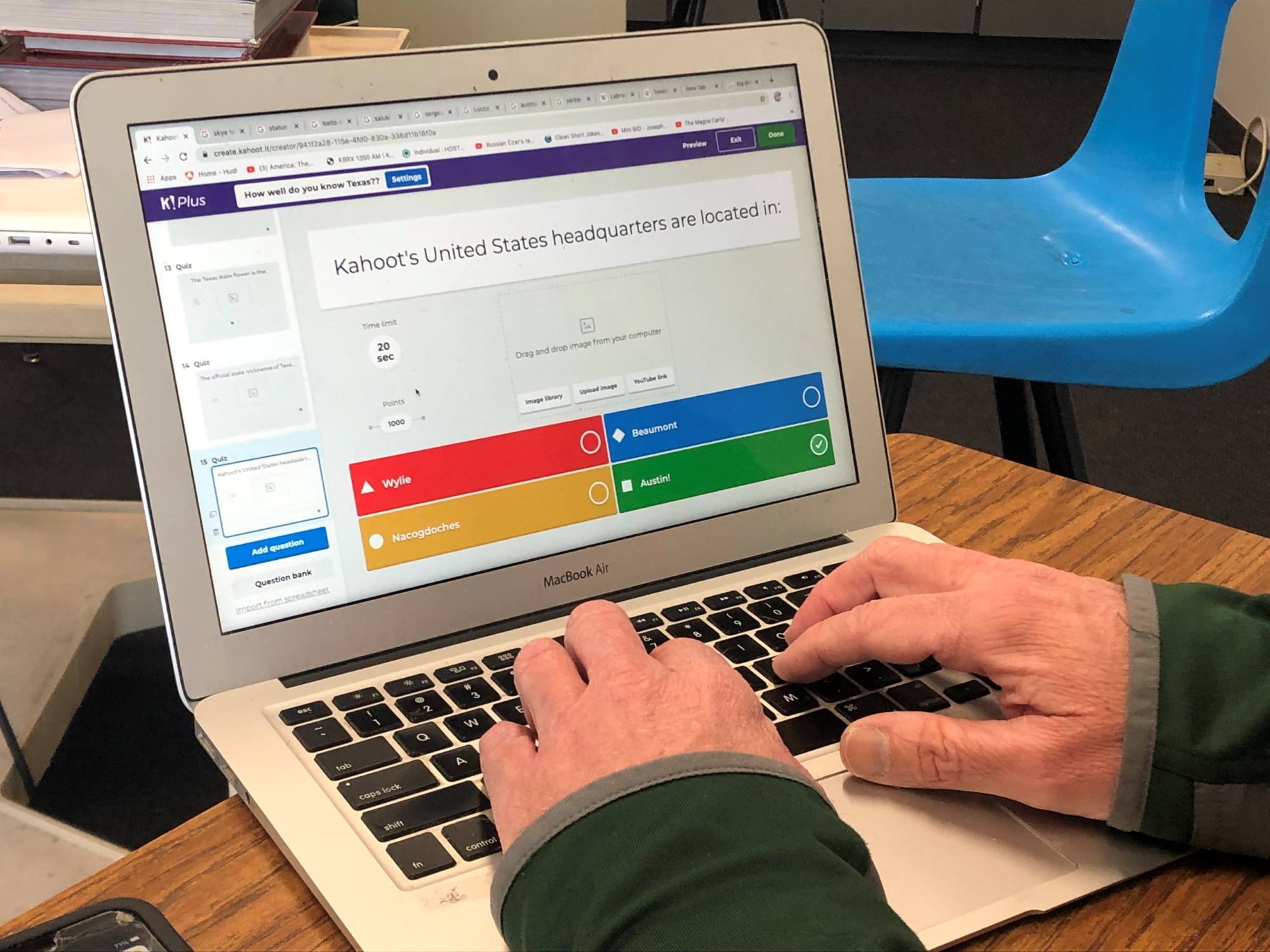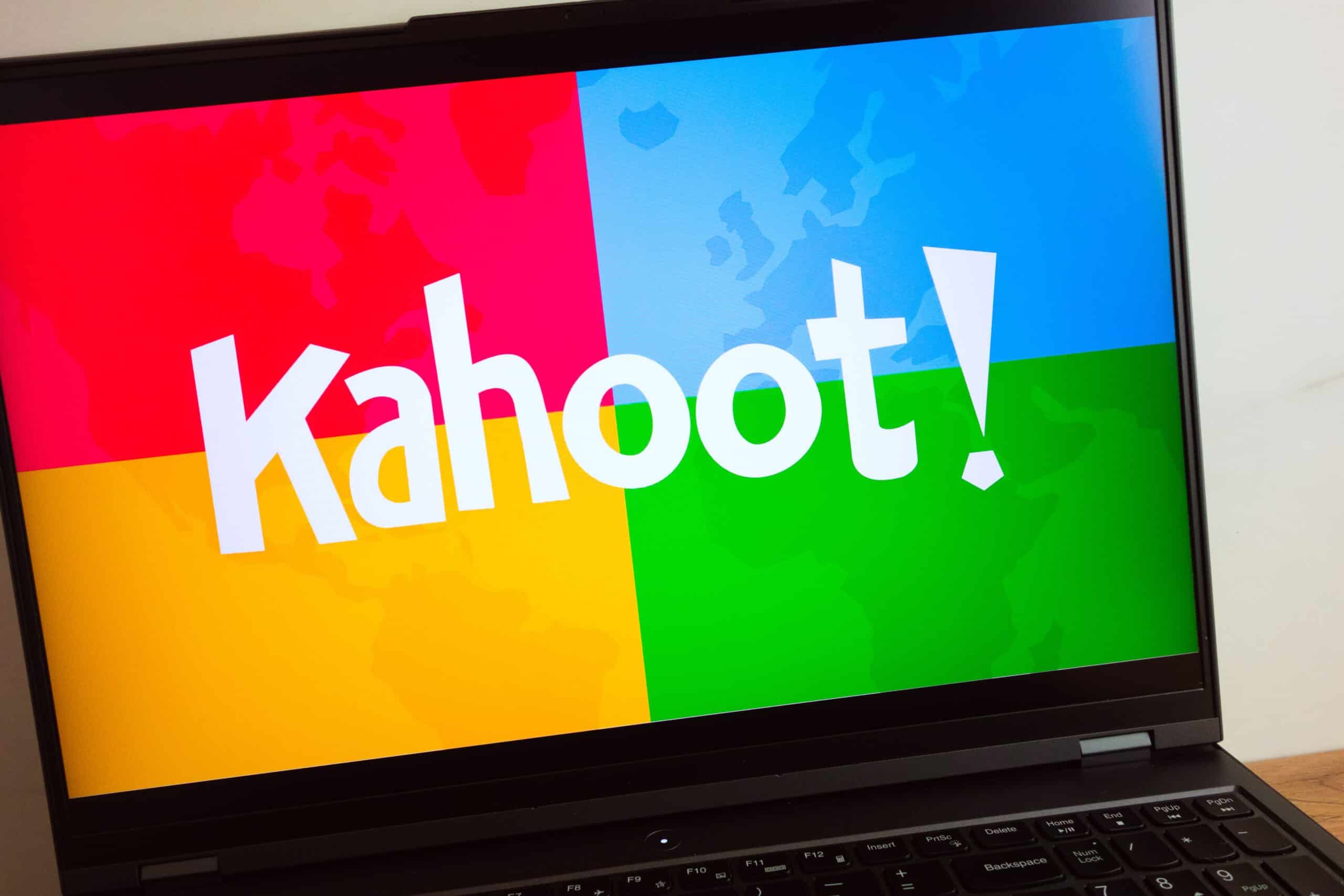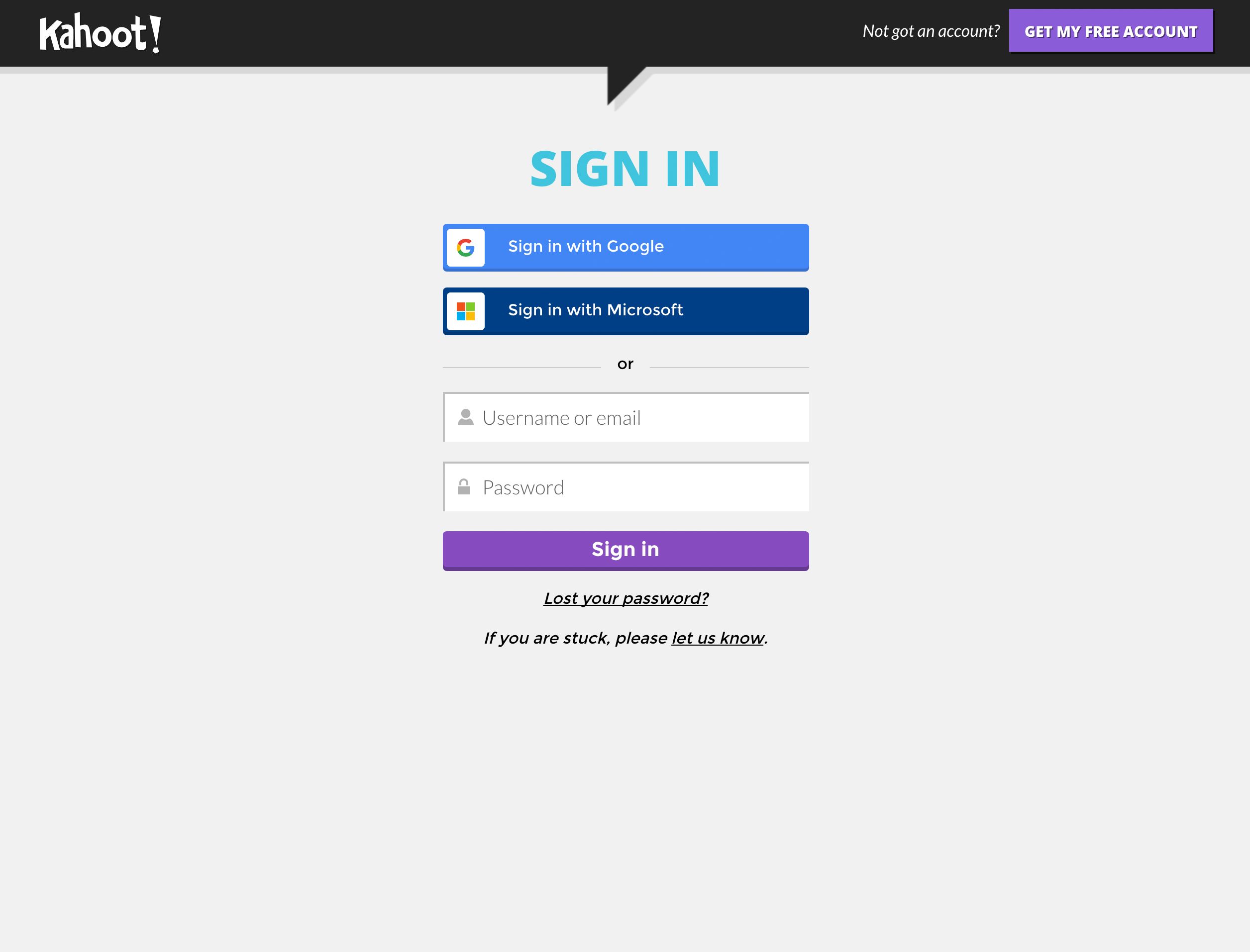Introduction
Welcome to the exciting world of Kahoot, where learning and fun collide! Kahoot is a popular online platform that allows you to create engaging and interactive games for educational purposes, corporate training, and even social gatherings. Whether you’re a teacher looking to quiz your students, a trainer aiming to liven up a workshop, or simply want to challenge your friends with a trivia night, Kahoot has got you covered.
With Kahoot, you can easily create your own games and quizzes and customize them to suit your specific needs. Whether you’re a seasoned Kahoot creator or a complete beginner, this guide will walk you through the process of creating a game on Kahoot, step by step. By the end of this tutorial, you’ll be well-equipped to design an engaging and interactive game that will captivate your audience.
Creating a game on Kahoot is not only a fun and engaging way to teach or entertain, but it also fosters active participation and boosts learning retention. Kahoot games are designed in a quiz format, where participants answer multiple-choice questions within a specific time limit. Points are awarded based on correct answers and how quickly they are submitted. This gamified approach adds an element of competition and excitement, making learning or trivia sessions highly enjoyable.
So, let’s dive into the world of Kahoot and explore the process of creating a game that will educate, engage, and entertain! Whether you’re a student, trainer, or trivia enthusiast, Kahoot is the perfect platform to unleash your creativity and make learning or social gatherings truly memorable.
Getting Started
Before you embark on your journey of creating a game on Kahoot, there are a few steps you need to take to get started. Don’t worry, it’s a quick and easy process!
The first thing you’ll need to do is visit the Kahoot website at www.kahoot.com. Once there, click on the “Sign up” button to create a free account. You can sign up with your existing Google or Microsoft account, or create a new account with your email address. Fill in the required details, agree to the terms of service, and click on “Sign up” to create your account.
After successfully creating your account, you will be redirected to the Kahoot homepage. Here, you’ll find a variety of options, but for now, let’s focus on getting started with creating your game.
Click on the “Create” button at the top of the page to begin the game creation process. You will be presented with three main options: Quiz, Survey, or Discussion. Choose the “Quiz” option as it allows you to create a game with multiple-choice questions.
Now, it’s time to give your game a catchy and descriptive title. This is what your participants will see when they join your game, so make it interesting and relevant to your topic. Additionally, you can add an optional description to provide further context to your game.
Once you’re happy with your game’s title and description, click on the “Create” button to proceed to the next step. Congratulations! You’ve successfully gotten started on creating your very own Kahoot game.
In the next section, we’ll explore the process of creating a Kahoot account in more detail. We’ll also learn how to navigate the game creation interface, so stay tuned!
Creating a Kahoot Account
In order to create and customize your own games on Kahoot, you’ll need to have an account. Creating a Kahoot account is quick and easy, and it’s absolutely free!
To get started, visit the Kahoot website at www.kahoot.com. Once you’re on the homepage, click on the “Sign up” button located at the top right corner of the page.
You’ll then be prompted to choose a sign-up method. You can sign up using your Google or Microsoft account by clicking on the respective buttons. Alternatively, you can create a new account by selecting the “Continue with email” option.
If you choose to sign up with your email, simply enter your email address, create a password, and click on the “Sign up” button. You may also have the option to sign up as a teacher or a student, depending on your affiliation and purpose on Kahoot.
After successfully creating your account, you’ll be taken to your Kahoot profile. Here, you can customize your profile picture, add a bio, and manage your account settings. Take some time to personalize your profile and make it reflect your unique personality or professional identity.
Creating a Kahoot account also gives you access to a wide range of pre-made games created by other users. You can explore these games and use them in your own sessions, making the most of the Kahoot community’s collective knowledge and creativity.
By creating an account, you’ll also be able to save and store your own games, track participants’ scores and progress, and refer back to your previous creations whenever you need them. Having an account provides you with a seamless and convenient way to manage your Kahoot activities and make the most out of the platform.
Now that you have your Kahoot account, you’re ready to jump into the game creation process. In the next section, we’ll explore how to build a game from scratch and add questions to make it engaging and challenging. Let’s continue our Kahoot journey!
Building a Game
Now that you have your Kahoot account set up, it’s time to dive into the exciting process of building your own game. Building a game on Kahoot is a breeze, thanks to the user-friendly interface and intuitive design of the platform.
To start building your game, log in to your Kahoot account and click on the “Create” button at the top of the page. You’ll be presented with the game creation options: Quiz, Survey, or Discussion. Select the “Quiz” option to create a game with multiple-choice questions.
Next, you’ll need to give your game a title and an optional description. The title should be catchy and relevant to the topic of your game, while the description can provide additional context or instructions for the participants.
Once you’ve set the title and description, click on the “Create” button to proceed to the game builder interface. Here, you’ll find a blank canvas waiting for you to add your questions and answers.
To add a question, click on the “Add question” button. A question field will appear, and you can type in your question. Below the question field, you’ll see the option to add multiple answers. Click on the “+” button to add answer choices.
For each answer choice, you can indicate whether it is correct or incorrect. Simply click on the checkbox next to the correct answer(s) to mark them as such. You can also define the number of points participants will earn for selecting the correct answer.
Repeat this process for each question you want to add to your game. Feel free to add as many questions as you like, although it’s recommended to keep the game length reasonable to maintain participants’ engagement.
As you build your game, you’ll notice various customization options available to you. These include setting time limits for answering questions, adding images or videos to enhance the visual experience, and assigning points and penalties for correct and incorrect answers.
Take your time to explore and experiment with these features to make your game even more engaging and challenging. Customizing your game can help you create a unique and memorable experience for your participants.
In the next section, we’ll dive deeper into the process of adding questions and customizing your game further. Get ready to level up your Kahoot creation skills!
Adding Questions
Now that you have the basic structure of your Kahoot game set up, it’s time to make it come alive by adding engaging and thought-provoking questions. Adding questions is a crucial step in creating an interactive and educational experience for your participants.
To add a question, navigate to the game builder interface on Kahoot. Click on the “Add question” button to create a question field. Type in your question in the provided space, making sure it is clear and concise.
Once you’ve entered your question, it’s time to add answer choices. Click on the “+” button to create answer fields. For multiple-choice questions, you can add as many answer choices as you want, but keep in mind that having too many choices can be overwhelming for participants.
For each answer choice, you can indicate whether it is correct or incorrect. To mark an answer as correct, simply click on the checkbox next to the choice. Kahoot allows you to have multiple correct answers if desired, making your game even more challenging and engaging.
Additionally, you can assign point values to each answer choice. This means that participants will earn different amounts of points depending on whether they select the correct or incorrect answer. By assigning different point values, you can reflect the difficulty level of each question and incentivize participants to strive for correct answers.
As you add questions, consider the level of difficulty and the content you want to cover. Are you aiming for a beginner-friendly game or a more advanced challenge? Tailor your questions to match the knowledge and skills of your target audience.
Remember to keep your questions clear and concise, avoiding any ambiguous phrasing or obscure content. Make sure each question has only one correct answer or clearly specifies if there are multiple correct choices.
Adding a variety of question types can also enhance the overall game experience. Besides traditional multiple-choice questions, you can explore other question formats such as true or false, open-ended, or poll questions. These different question types can add diversity and engagement to your game.
Once you have added all your questions, take a moment to review them to ensure they are accurate and well-structured. Proofread for any spelling or grammar mistakes, and make any necessary edits before moving on to the next step.
Adding questions is a fundamental part of game creation on Kahoot, providing the backbone of the interactive learning experience. In the next section, we’ll delve into the exciting process of customizing your game to make it visually appealing and engaging. Get ready to add some flair to your Kahoot game!
Customizing the Game
Once you have added your questions, it’s time to customize your Kahoot game to make it visually appealing and engaging for your participants. Customization plays a key role in creating an immersive and interactive experience that captures the attention of your audience.
To start customizing your game, navigate to the game builder interface on Kahoot. Here, you’ll find various options to personalize and enhance your game.
One of the first customization options available to you is the ability to set a game cover image. This image will be displayed as the thumbnail for your game and can give a glimpse into its theme or content. You can either choose from the pre-selected images provided by Kahoot or upload your own image to make it more personalized.
In addition to the cover image, you can also customize the background of your game. Click on the “Settings” tab on the top right corner of the page and select the “Appearance” option. Here, you can choose a background color or upload an image to set the visual tone for your game.
To make your game more visually engaging, you can also add images to your questions. Click on the image icon next to each question field to upload images that correspond to the question or provide additional visual context. This can be especially useful for questions related to visual subjects such as geography, history, or art.
Another customization option is the ability to select a theme for your game. Themes on Kahoot change the overall visual style and color scheme of the game. You can choose from a variety of themes, ranging from playful and vibrant to sleek and professional, depending on the mood and audience of your game.
Furthermore, you can add background music or sound effects to create a more immersive experience. Keep in mind that too much audio may be distracting, so use it sparingly and ensure it enhances rather than distracts from the game itself.
To further customize the game, you can add a game logo, adjust the font style and size, and even add your own branding elements such as a company logo or school emblem.
Remember, customization allows you to create a visually appealing and unique game that aligns with your content and audience. However, it’s important to find the right balance. Avoid overwhelming your participants with excessive customization that might distract from the main purpose and content of the game.
Now that you’ve customized your game to make it visually appealing and engaging, it’s time to explore additional features such as adding images, setting time limits, and managing points and penalties. In the next sections, we’ll delve into these exciting customizations that will elevate your Kahoot game to the next level!
Adding Images
Incorporating images into your Kahoot game can greatly enhance the visual appeal and engagement of your participants. Visuals have the power to grab attention, evoke emotions, and reinforce learning concepts. Adding images to your game allows you to create a more immersive and interactive experience.
To add images to your game, navigate to the game builder interface on Kahoot. Here, you’ll find various options to customize and enhance your questions.
Click on the image icon next to each question field to upload an image that corresponds to the question or provides visual context. You can either select an image from the pre-selected options provided by Kahoot or upload your own images.
When selecting or uploading images, it’s important to choose ones that are relevant to the question and enhance the learning or entertainment experience. For example, if you’re creating a history quiz, you can include images of historical figures, landmarks, or events. If it’s a science quiz, consider including diagrams, illustrations, or photographs related to the topic.
Make sure the image you choose is of good quality and clear. Avoid using images that are pixelated or visually confusing, as this can detract from the overall game experience. You want your participants to easily understand and engage with the visuals.
In addition to adding images to your questions, you can also consider incorporating images for your answer choices. This can be especially effective in visual subjects such as art, where participants can visually analyze the different options before selecting an answer.
Remember to keep the image sizes and file formats in mind as you upload them to Kahoot. It’s recommended to use JPG or PNG formats for images, and try to keep the file size reasonable to ensure smooth loading and gameplay.
Adding images to your game not only increases the visual appeal but also adds an extra layer of interactivity and engagement. Visuals have the power to stimulate participants’ curiosity and reinforce key concepts, making learning or entertainment even more memorable.
Now that you’ve added images to your game, it’s time to explore other customization options on Kahoot, such as setting time limits, adding points and penalties, and including media content. These features will allow you to create a dynamic and challenging experience for your participants. Let’s continue our Kahoot journey!
Setting Time Limits
Setting time limits in your Kahoot game adds an element of urgency and excitement, making it more challenging and engaging for your participants. Time limits create a sense of competition and encourage quick thinking and decision-making.
To set time limits for answering questions, navigate to the game builder interface on Kahoot. Here, you’ll find various customization options to enhance your game, including the ability to control the time allowed for participants to answer each question.
By default, Kahoot sets a time limit of 20 seconds for each question. However, you have the flexibility to adjust this limit based on the complexity of your questions and the pace you want to set for your game.
To change the time limit for a specific question, click on the “More options” icon (three horizontal dots) next to the question. From there, select the “Change time limit” option. You can then enter the desired time limit in seconds.
It’s important to strike a balance when setting time limits. While a shorter time limit can add excitement and a sense of urgency, it may also put undue pressure on participants and hinder their ability to think through the question. On the other hand, a longer time limit may slow down the pace of the game and decrease the level of engagement.
Consider the difficulty level of your questions and the level of expertise of your participants when setting the time limit. More challenging questions may require a bit more time for participants to reason and select the right answer, while easier questions may warrant a shorter time limit to maintain the flow of the game.
It’s also worth noting that not all questions need to have the same time limit. You can vary the time limits based on the complexity of the questions or to create a strategic challenge within the game.
Setting time limits can create a thrilling and fast-paced environment that keeps participants on their toes. It adds an extra layer of difficulty and excitement to the game, pushing participants to think quickly and make decisions under pressure.
Now that you have mastered the art of setting time limits, let’s move on to the next section, where we’ll explore adding points and penalties to your Kahoot game. Get ready to reward correct answers and challenge incorrect ones!
Adding Points and Penalties
Adding points and penalties to your Kahoot game can spice up the competition and motivate participants to strive for correct answers. Points and penalties allow you to reward knowledge and deduct points for incorrect responses, creating a dynamic and challenging game.
To add points and penalties to your game, navigate to the game builder interface on Kahoot. Here, you’ll find various customization options to enhance your game, including the ability to assign point values to correct answers and penalties for incorrect answers.
For each question, you can assign a specific number of points that participants will earn for selecting the correct answer. Kahoot provides the flexibility to set different point values for each correct answer choice, allowing you to differentiate between answers of varying difficulty or importance.
To add points to a correct answer, click on the checkbox next to the correct answer choice. You’ll also need to indicate the number of points participants will receive when selecting that specific answer.
On the flip side, you can also deduct points for incorrect answers by assigning a penalty. This penalty serves as a motivation for participants to think carefully and avoid guessing randomly. It encourages them to weigh their options and make informed choices.
When setting penalties, you can assign a negative point value to incorrect answers. This deducts points from the participants’ score when they choose an incorrect option. Similar to assigning points, you have the flexibility to set different penalty values for each incorrect answer choice.
Consider the difficulty and significance of each question when assigning points and penalties. More challenging questions or questions pertaining to critical concepts can carry higher point values, while easier questions may have lower point values or no penalties at all.
Assigning points and penalties adds a competitive edge to your Kahoot game, motivating participants to strive for accuracy and rewarding knowledge. It encourages active engagement and fosters a sense of achievement when participants earn points for correct answers.
Remember, points and penalties should maintain a fair and balanced gameplay experience. Collaborative Kahoot sessions, where participants work in teams, can be a great way to ensure a positive and inclusive experience for everyone.
Now that you’ve added points and penalties to your game, let’s move on to the next section, where we’ll explore how to include media content in your Kahoot game. Get ready to make your game even more captivating and entertaining!
Including Media Content
One exciting way to elevate your Kahoot game is by incorporating media content. Adding images, videos, and audio clips can enhance the overall learning or entertainment experience, making it more engaging and interactive for participants.
To include media content in your Kahoot game, navigate to the game builder interface. Here, you have several options for adding media:
1. Images: Click on the image icon next to each question to upload relevant images. Images can provide visual context, help illustrate concepts, or add visual appeal to your questions.
2. Videos: Kahoot allows you to embed YouTube videos directly into your questions. Click on the video icon next to a question and paste the YouTube video URL. This feature is particularly useful for adding video clips that demonstrate processes, show examples, or provide additional information.
3. Audio: If you want to include audio clips in your game, you can upload MP3 files or use the built-in audio library provided by Kahoot. Adding background music, sound effects, or voice recordings can enhance the immersive experience for your participants.
When incorporating media content, it’s important to keep in mind the purpose and relevance. Ensure that the media you include aligns with the content and supports the learning objectives or entertainment value of your game. Use media to reinforce concepts, spark interest, or provide visual or auditory cues that aid in understanding.
Remember that media content should not be overwhelming or distracting. Use it selectively and purposefully, making sure it complements the overall learning or entertainment experience rather than overshadowing the main focus of the game – the questions and answers.
Engaging visuals and appropriate audio can make your Kahoot game more immersive and memorable. Be creative and think about how media content can enhance the overall experience for your participants.
Now that you’ve learned how to include media content in your game, let’s move on to the next section, where we’ll explore how to edit questions and make any necessary adjustments to ensure a seamless gameplay experience. Let’s continue our journey of creating an outstanding Kahoot game!
Editing Questions
Editing questions is an essential aspect of fine-tuning your Kahoot game and ensuring a seamless and engaging gameplay experience for your participants. Through the editing process, you can refine and polish your questions to enhance clarity, accuracy, and relevance.
To edit a question, navigate to the game builder interface on Kahoot and click on the question you want to edit. This will bring up the question field, allowing you to make any necessary changes or modifications.
When editing a question, consider the following aspects:
1. Clarity: Ensure that the wording of the question is clear and concise. Avoid using ambiguous language or complex sentence structures that may confuse participants. Aim for questions that are easily comprehensible and straightforward.
2. Accuracy: Double-check the accuracy of both the question and the answer choices. Make sure the information presented is correct and free from any factual errors. Inaccurate questions may lead to confusion and undermine the integrity of the game.
3. Relevance: Review the relevance of the question to the overall theme or topic of your game. Ensure that each question addresses an important aspect or key concept related to the subject matter. Remove any questions that may be irrelevant or off-topic.
4. Difficulty Level: Evaluate the difficulty level of each question and adjust it accordingly. Consider the knowledge and skill level of your target audience and aim for a balanced mix of easy, moderate, and challenging questions to keep participants engaged and challenged.
In addition to editing the questions themselves, you can also make adjustments to the answer choices. Ensure that each answer choice is accurate, relevant, and distinctly different from the others to provide meaningful options for participants to choose from.
While editing, it’s beneficial to put yourself in the shoes of the participants to anticipate any potential confusion or ambiguity. Think about how the question will be interpreted and ensure that it presents a clear and accurate assessment of knowledge or understanding.
Lastly, proofread your questions and answers for any spelling or grammatical errors. Pay attention to details and make any necessary corrections to ensure a professional and polished game.
Editing questions is a crucial step in refining and perfecting your Kahoot game. It allows you to create a seamless and engaging experience for your participants, ensuring that the questions are clear, accurate, and relevant to the learning or entertainment objectives of your game.
Now that you’ve mastered the art of editing questions, let’s move on to the next section, where we’ll explore how to save and share your game with others. Get ready to share your Kahoot creation with the world!
Saving and Sharing your Game
After putting in all the hard work to create your Kahoot game, it’s important to save it and share it with others so they can enjoy and participate in it. Saving and sharing your game on Kahoot is a straightforward process that allows you to reach a wider audience and engage with others.
To save your game, click on the “Save” button in the game builder interface. Kahoot will automatically save your game progress, ensuring that any modifications you’ve made are stored safely. It’s always a good idea to save your game regularly during the creation process to avoid any potential loss of data.
Once your game is saved, you can access it anytime from your Kahoot profile. Simply click on your profile icon and select “My Kahoots” to view all your saved games. From here, you can further edit your game or make any necessary changes before sharing it.
Sharing your Kahoot game allows others to play and participate in it. There are multiple ways to share your game:
1. Create a Challenge: Kahoot allows you to create a challenge link that others can use to access and play your game. Simply click on the “Challenge” button next to your game and generate a unique link. You can then share this link with your intended audience, whether it’s your students, colleagues, or friends.
2. Share via URL: Another option is to copy the URL of your game and share it directly with others. This way, they can simply click on the link to access and play your game on Kahoot.
3. Share on Social Media: If you want to reach a broader audience, you can share your game on social media platforms such as Facebook, Twitter, or LinkedIn. Simply click on the social media icons provided on the game’s page to post and share the game on your preferred platform.
4. Share with a PIN: In some situations, you may want to share your game privately with a specific group of people. Kahoot allows you to set a game PIN, which you can share exclusively with your desired participants. They can then enter the PIN on the Kahoot website or app to join and play your game.
It’s worth noting that when sharing your game, you have the option to make it visible to the Public or restrict its visibility to only those with the link or PIN. Choose the visibility option that aligns with your preferences and the intended audience of your game.
Sharing your game on Kahoot opens up opportunities for interaction, engagement, and collaboration. Whether it’s for educational purposes, team building, or social gatherings, sharing your game allows others to experience and benefit from your creation.
Now that you know how to save and share your game on Kahoot, it’s time to move on to the final section – hosting a game! In the next section, we’ll explore how to lead and facilitate a Kahoot game session to maximize enjoyment and learning. Get ready to become the ultimate Kahoot host!
Hosting a Kahoot Game
Hosting a Kahoot game is an exciting opportunity to engage and interact with your participants, whether it’s in a classroom, virtual setting, or social gathering. As a host, your role is to facilitate the game session, create a fun atmosphere, and guide participants through the questions. Let’s explore how to host a Kahoot game effectively!
Before starting the game, make sure all participants have access to the game link or PIN. Provide clear instructions on how to join the game, whether it’s through a web browser or the Kahoot app. Ensure everyone is familiar with the game format and rules.
Once all participants have joined, introduce the game and provide any necessary context or objectives. Explain how the game will progress, including the number of questions, time limit, and scoring system. This sets the expectations and gets everyone ready for the fun ahead.
As the host, it’s crucial to maintain a lively and engaging atmosphere throughout the game. Use your enthusiasm and energy to motivate the participants and keep them excited. Incorporate interjections, encouragements, and humorous comments to create a more dynamic experience.
Read out each question clearly and provide sufficient time for participants to analyze the options and make their choices. Monitor the progress of the game using the Kahoot dashboard, which displays the participants’ responses and scores in real-time.
Once the time limit for each question is up or all participants have submitted their answers, reveal the correct answer. Take a moment to explain the correct answer and provide any relevant additional information or explanations. This helps reinforce learning and understanding.
Throughout the game, maintain fairness and encourage sportsmanship. Celebrate correct answers and acknowledge participants’ achievements, while also ensuring a positive and inclusive environment for everyone to enjoy. Emphasize that the goal is to have fun and learn together.
At the end of the game, reveal the final scores and announce the winners or top performers. Consider rewarding participants with virtual badges, certificates, or small prizes as a token of appreciation for their participation and achievement.
After hosting the game, take the opportunity to gather feedback from the participants. Ask for their opinions, suggestions, and any areas of improvement they may have identified. This feedback can help you evolve as a host and create even better game experiences in the future.
Lastly, remember to thank all the participants for their engagement and participation. Express appreciation for their time and effort in making the game session enjoyable and memorable. Congratulate everyone on their achievements and encourage them to continue exploring and learning through Kahoot.
Now that you have the tools to host a Kahoot game, it’s time to embark on this exciting journey of creating engaging and interactive learning or entertainment experiences. Get ready to have a blast as a Kahoot host!







